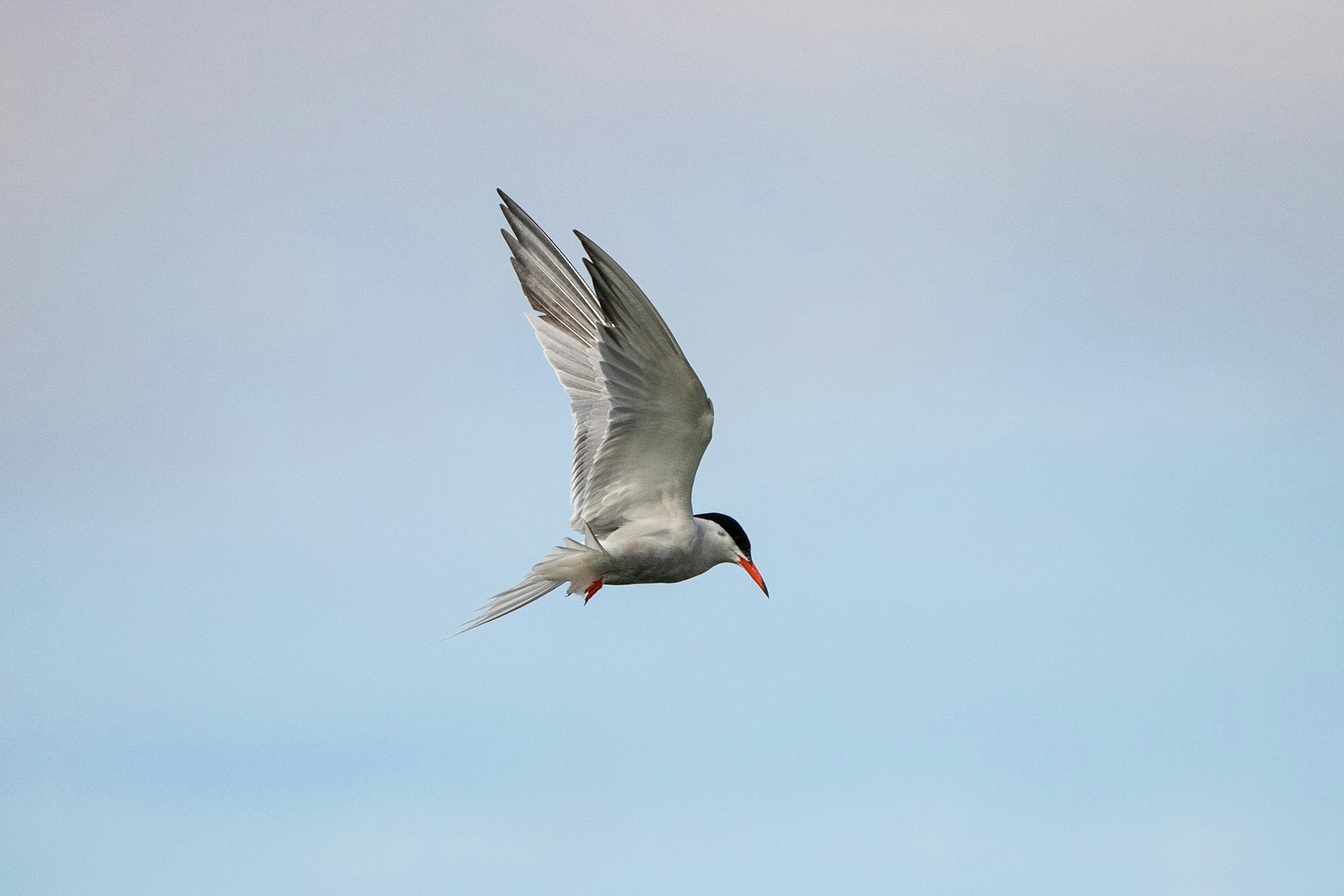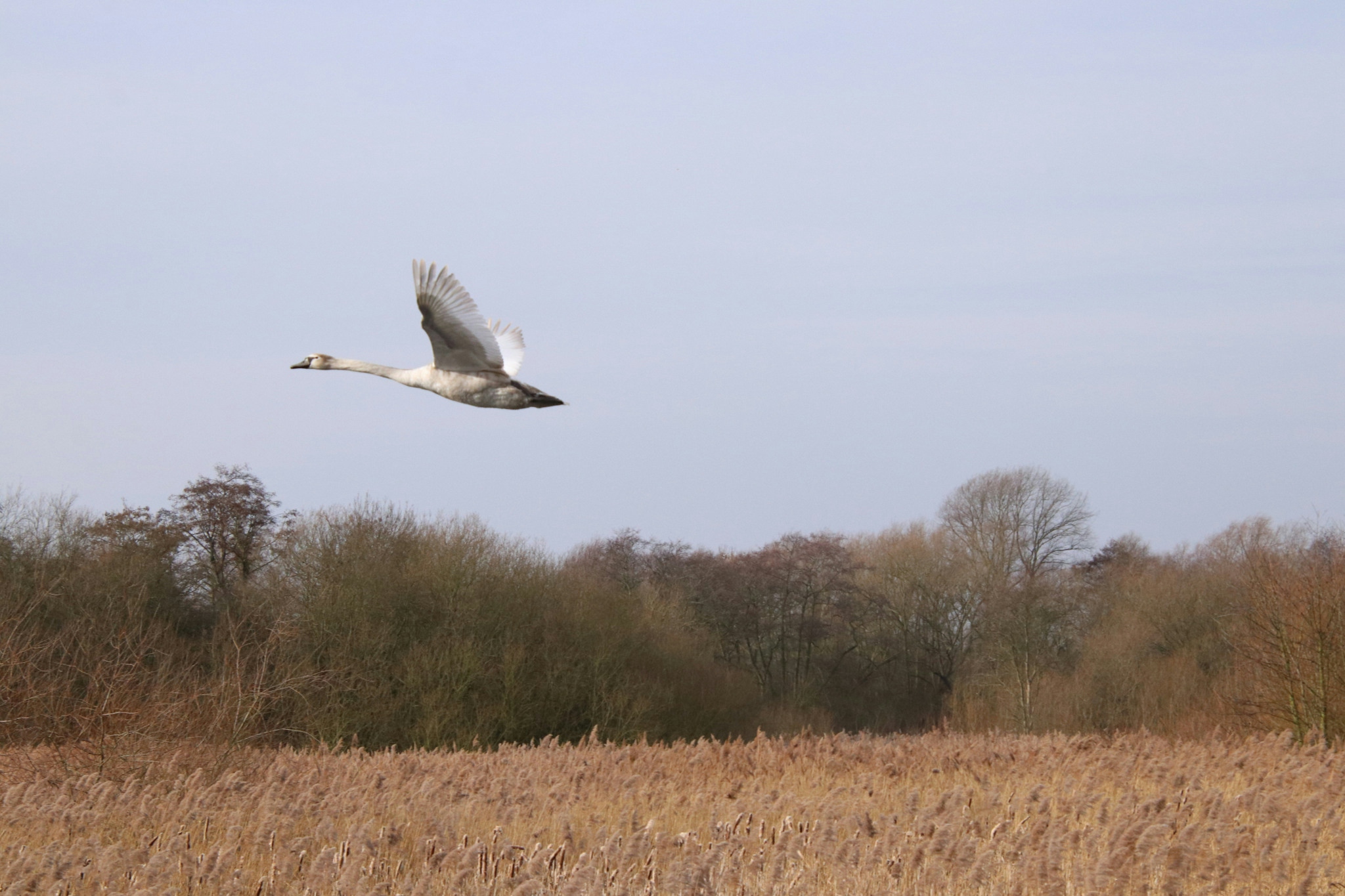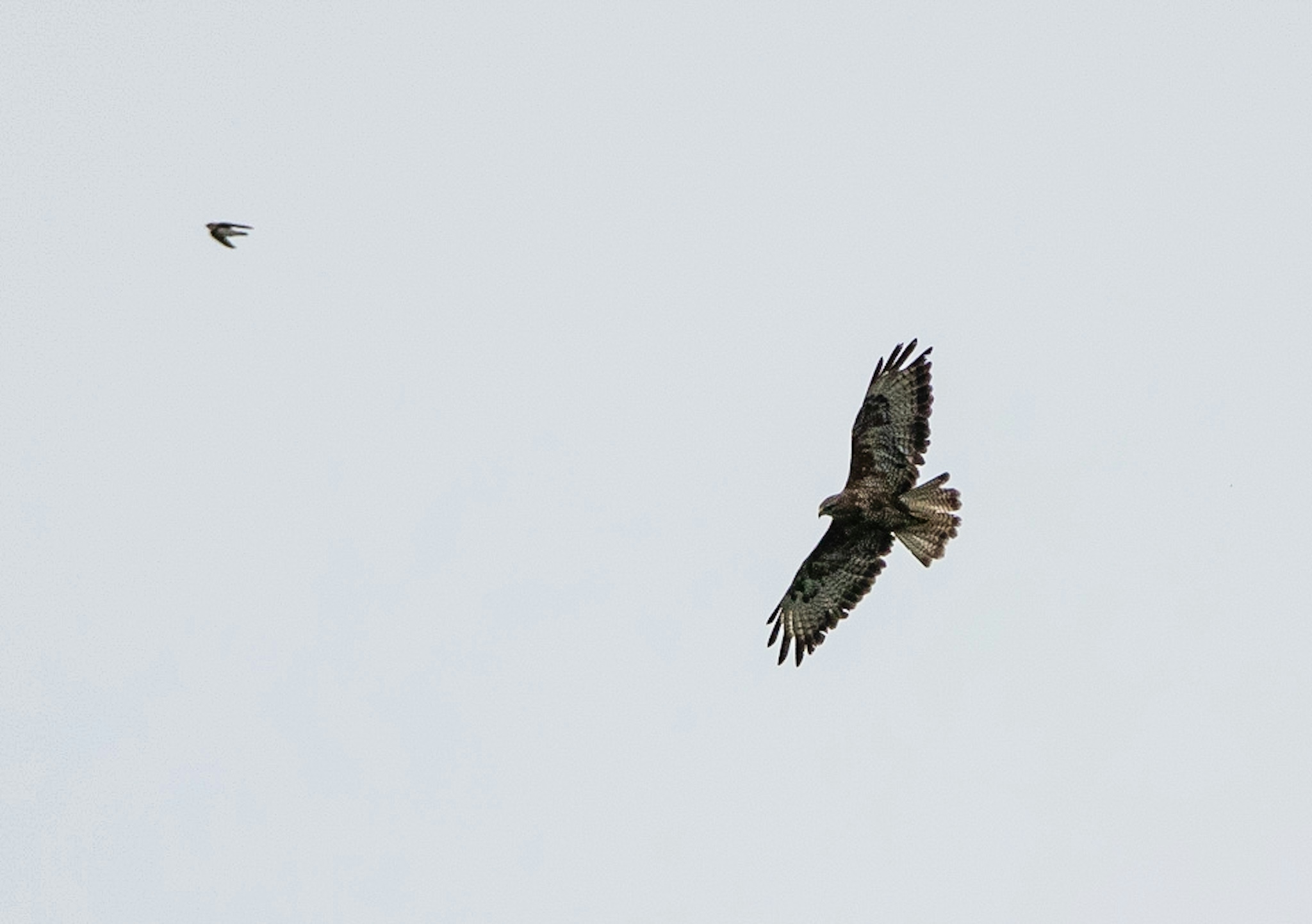TO FLAP OR TO SOAR? BIRD FLIGHT PATTERNS AND HOW THEY INFLUENCE MIGRATION

Bird migration is a wonder. Half of the world’s 10,000 bird species migrate every year, with some return journeys clocking up 30,000 km – that’s a lot of flying. You might have noticed that birds fly differently: some seem to flap continuously (like ducks), some seem to dip up and down (like tits) and some soar around without flapping their wings (like buzzards). Why do birds fly in different ways, and what effect does it have on their migration?
TO FLAP
Some birds, like blackbirds and ducks, fly by continuous flapping. This is a very energy-intensive way to fly, because all of the lift required for the bird to travel needs to be generated by the bird itself through use of its breast muscles. Flapping does have some serious advantages in return for that energy input, though.
The pay-off for using so much energy is freedom. Flapping birds can fly over open water and inhospitable terrain without having to worry about finding thermals, which allows them to take more direct routes to their destination (unlike soaring birds, who often have to take roundabout routes).
They can also travel at any time of day – including overnight – whereas soaring birds have to travel at given times during the day, when thermals are strongest. Birds like robins, grebes, starlings and thrushes migrate mostly at night using powered flight. Migrating at night allows flapping birds to travel in cooler conditions, to avoid overheating, and reduces the risk of predation, as well as allowing the birds more time to feed during daylight (which is the only time most birds can feed).
Flapping birds can also travel at high altitudes because they aren’t constrained by the height of thermals (this is why you don’t usually see small migrating birds – they usually fly too high for us to see from the ground). They can travel on broader routes, too, instead of concentrating around certain narrow crossings like soaring birds. The continuous flapping also generates heat, which keeps the birds warm in cold areas (but can lead to overheating in warmer areas).
Powered flight is a bit like paying for Spotify premium. It costs more (in energy or cash), but you get more freedom in return for that payment (in the form of direct, high altitude migration routes, or the ability to skip as many songs as you like).

TO FLAP A BIT
Bounding or undulating flight – dipping up and down – is a method of flight adopted by lots of small birds on their migrations (and in daily life). They flap their wings a few times using their flight muscles – powered flight – then they close their wings and ‘dip’, before switching back to powered flight. They close their wings to reduce air resistance while they benefit during this dipping period from the residual lift generated by their earlier flapping. This method of flying reduces the energy needed to fly by 10-15%.
Flying in an undulating pattern allows birds to fly longer distances using less fuel, and also helps them to fly faster. It means they get a little rest in between flapping, which is useful given how energy-intensive powered flight is.
Bounding flight is a bit like when you’re riding a bike and you pedal hard for a bit and then enjoy a little period where you whizz along with no pedalling.
Examples of birds you might see in the UK that use bounding flight include tits, sparrows, woodpeckers, and finches. Generally speaking, the larger the bird, the longer the ‘dip’ part of its undulating flight, so great tits dip up and down quite rapidly in flight, whereas green woodpeckers have a more spread-out pattern of rises and dips.
TO SOAR
Continuous flapping is very energy-intensive. As mentioned above, bounding flight uses around 10-15% less energy than continuous flapping flight, but soaring-gliding flight saves a whopping 75-95% of energy when compared to continuous flapping, and this is the stand-out advantage of this type of flight.
This advantage is even more important for heavy birds; the heavier the bird, the harder it is for the bird to create lift by flapping its wings, so the greater the energy saving from swapping to a type of flight that does not require flapping.
Birds glide by circling upwards on a thermal, then soaring and losing height until another thermal, where they circle upwards again; by doing this, they can cover large distances without more than a few flaps of their wings. One of the easiest birds to see soaring in the UK is the common buzzard – they’re large brown birds of prey with ‘finger’ wing feathers that you’ll often see circling in pairs without flapping their wings over woodland or open fields (pictured below). Our buzzards seem to all be resident, but migratory birds that soar that you can see in the UK include marsh harriers, hen harriers, ospreys, and kestrels.
A buzzard generally loses 1 m of height for every 15 m of forward motion, meaning if she gets to 1,000 m up in a thermal, she can soar 15 km without flapping her wings once. Less energy-intensive flight means that soaring birds can fly further with lower energy reserves – useful for larger birds that have less capacity to store extra fuel (fat) before migrating. They can also fly faster – reaching overall speeds of up to 50 km per hour (the actual speed depends on factors such as wing design and weight of the bird).
These factors mean that soaring birds can complete their migration in a shorter time – both because they can travel faster and because they need to spend less time on the ground refuelling. Soaring also generates less heat than continuous flapping, which means soaring birds need more energy to stay warm in cold places but this is a benefit in hotter places, because it means the bird is less likely to overheat and therefore less likely to need to pant to cool down and run the associated risks of water loss and dehydration.

WHICH METHOD IS BEST?
Energy-wise, flapping flight is like running on a treadmill, undulating flight is like riding a scooter, and soaring flight is like being on an electric bike.
Flapping flight is difficult and tiring but allows a high, direct route which can be flown at night. Undulating flight is a medium-energy version of flapping flight that can be used on the same direct routes. Soaring flight is a very low-energy way to fly, but requires daytime flight over certain restricted routes.
All of these methods of flight have made it through hundreds of thousands of years of evolution. If any particular type of flight was clearly superior to another, the inferior method would have died out through natural selection. Flapping and soaring have different strengths, and much of whether the benefits of each type outweigh the costs depend on species-relevant factors such as body weight and wing design (which in turn, may have advantages in other areas of daily life).
RESOURCES
Newton, I., 2020. Bird Migration. William Collins.
Share with your friends
Subscribe to learn more
Join me in exploring our natural world and cultural heritage as we learn how to protect and restore it. Get notified on my latest posts and a monthly newsletter on wider conversation topics for us to chat about.
Recent Posts
If you enjoyed this one, then you might like these too.